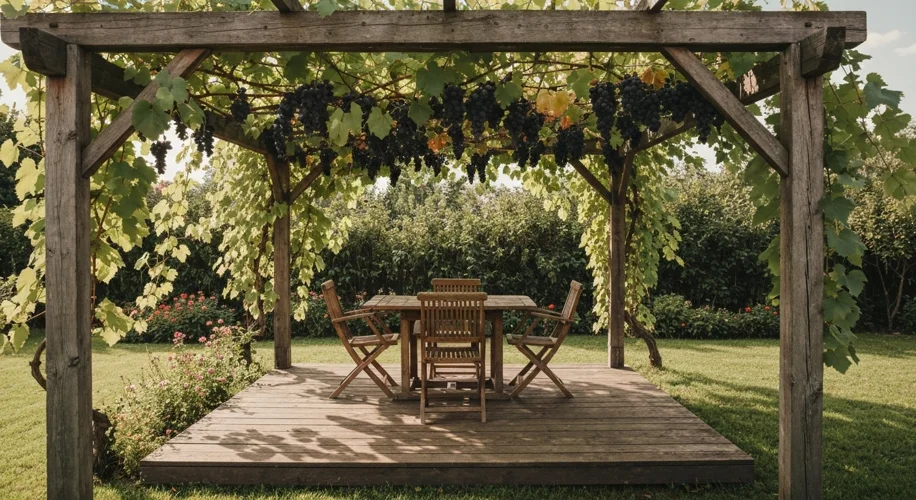It’s August 20th, 2025, and the garden is humming along. I’ve been thinking about structures for the backyard, specifically pergolas. But not just any pergolas – ones that could also produce food. My mind keeps drifting to the idea of building a pergola and training table grapes to grow all over it. It sounds like a beautiful, functional addition to any yard, right?
Let’s dive into what it really takes to make this happen.
The Allure of a Grape-Covered Pergola
Imagine it: a shaded, inviting outdoor space with lush green leaves overhead, and clusters of sweet grapes ready for the picking. It combines the architectural beauty of a pergola with the bounty of a vineyard. It’s a picture of sustainable living and backyard abundance, which, as you know, is right up my alley.
Grape Growing Basics
Table grapes, like Concord, Niagara, or even some of the seedless varieties like Thompson Seedless, can be vigorous growers. They love sunshine and well-drained soil. To thrive, they need a sturdy structure to climb on, and a pergola fits that bill perfectly. The key is to choose a variety that suits your climate and your taste preferences.
Designing for Grapes
When you’re planning a pergola for grapes, you need to think beyond just aesthetics. The structure needs to be robust. Grapes are heavy, especially when laden with fruit. The beams and posts should be strong enough to support the weight of the vines throughout the growing season and during harvest.
Consider the spacing of your horizontal supports. You’ll want something for the vines to be trained onto as they grow upwards and outwards. A grid-like pattern works well, allowing you to guide the vines and manage their growth.
The Practicalities of Backyard Grapes
Now, let’s talk about what it’s like to manage grapes on a pergola.
- Pruning is Key: Grapes require regular pruning. This isn’t a ‘set it and forget it’ kind of plant. You’ll need to prune aggressively in the dormant season (late winter) to encourage fruit production and manage the vine’s size. Summer pruning, or ‘suckering,’ will also be necessary to remove unwanted shoots and improve air circulation.
- Pest and Disease Management: Like any plant, grapes can be susceptible to pests and diseases. Powdery mildew, downy mildew, and various insects can be issues. Good air circulation, provided by proper pruning and vine management, is crucial for prevention. You might need to spray at certain times, depending on your local conditions.
- Harvesting: Picking grapes from a pergola can be a bit of an adventure. You’ll need a sturdy ladder or step stool to reach the higher clusters. It’s also a good idea to plan your pergola’s height with harvesting in mind.
- Sunlight: While the grapes will appreciate the sun, the leaves need some shade to prevent scorching, especially in hotter climates. The pergola structure itself helps with this, but you’ll want to ensure the vines are spread out enough to get good light without burning.
So, Should You Build That Grape Pergola?
It’s a romantic notion, and it can absolutely be a rewarding one. The beauty, the shade, and the fresh fruit are undeniable. However, it requires a commitment to understanding grape cultivation and being diligent with pruning and maintenance. It’s more than just a garden structure; it’s an active participant in your food-growing efforts.
If you’re ready for the challenge and love the idea of harvesting your own grapes right from your patio cover, then go for it! It’s a project that brings together design, horticulture, and delicious rewards.

